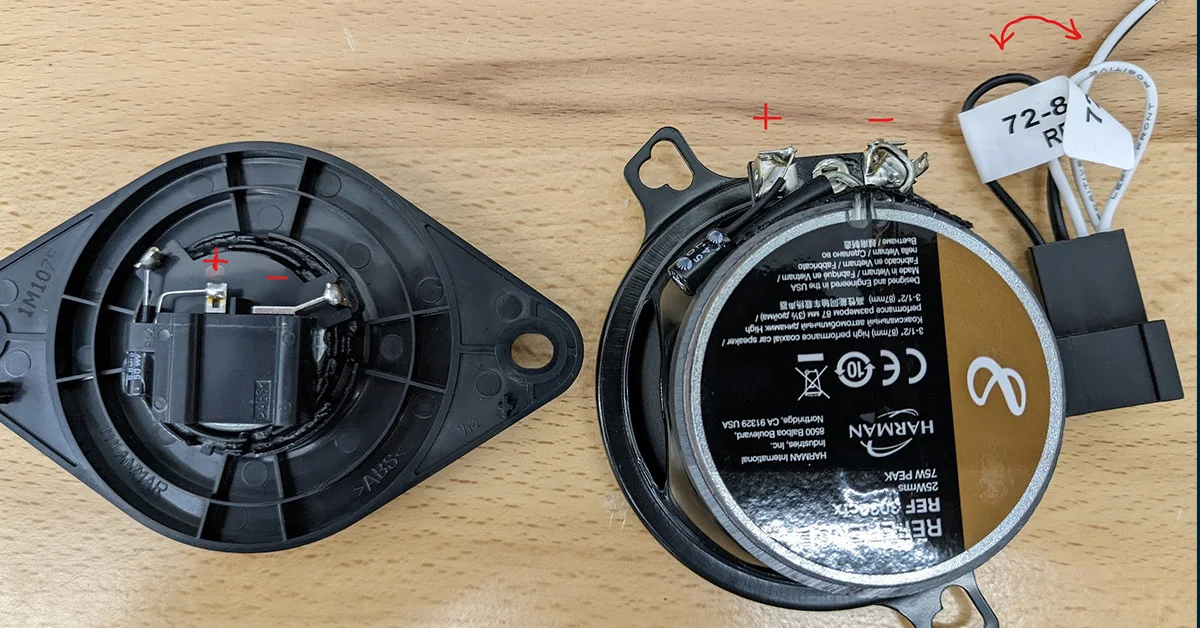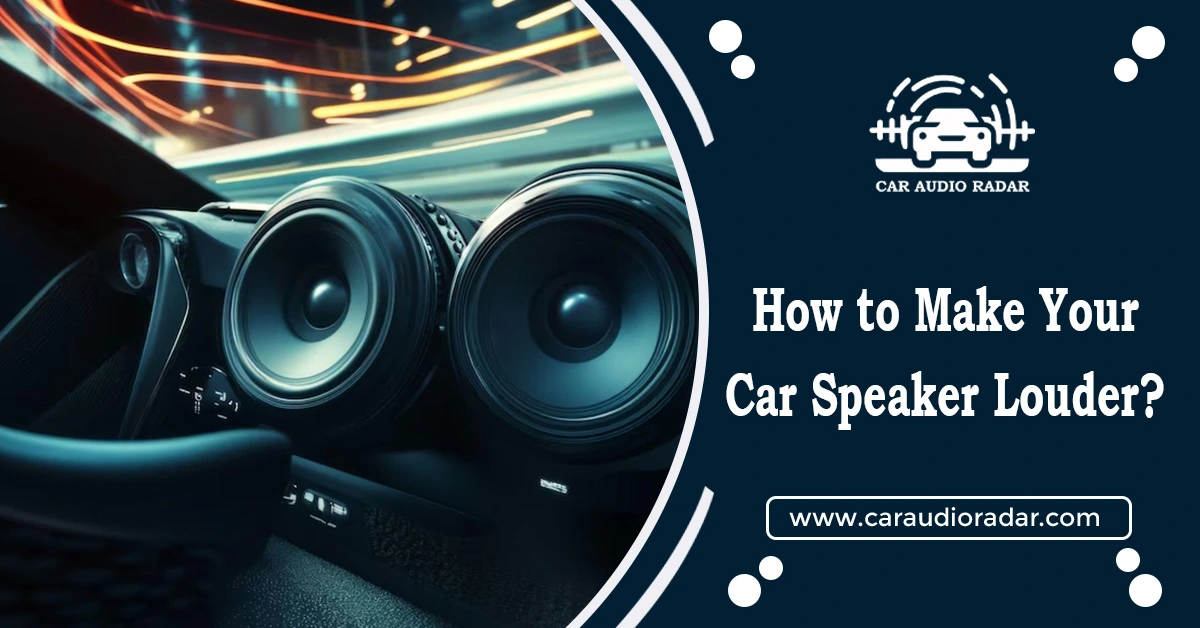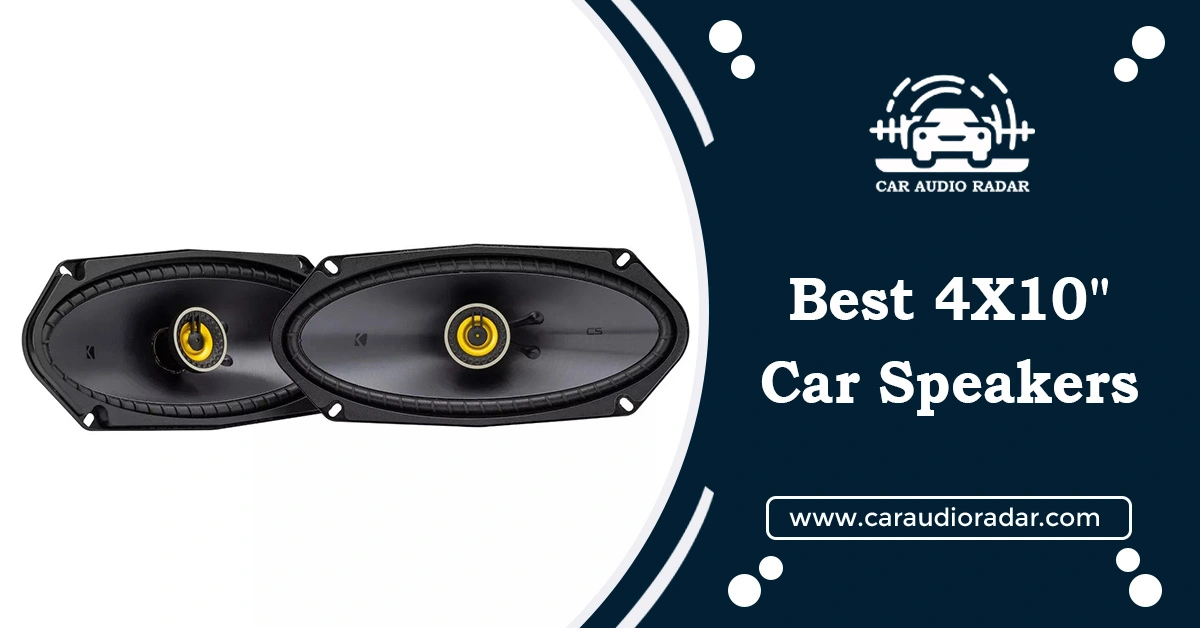
Jump to
How to Install Bass Blockers in Car Speakers: Easiest Steps

How to Install Bass Blockers for Car Speakers? Are you fed up with your car speakers getting too much bass, making the sound all fuzzy and not as good as it could be? It may be time to consider installing bass blockers for your car speakers.
You can easily add these small capacitors to your speaker wires or in between the speaker and the sound system. They help block out extra low-frequency sounds, making the audio cleaner and more even. In this article, we will discuss the benefits of using bass blockers, how to install them, and how they can improve your car’s sound system.
What are Bass Blockers and How Do They Work?
Bass blockers are special parts used in car audio systems to stop deep sounds, like bass, from going to certain speakers. They’re mainly used to protect small speakers, like tweeters, from getting damaged by getting sounds they can’t handle.
These blockers work by slowing down the deep sounds going to those speakers. This way, they only get the sounds they can handle well. This helps avoid sound problems and prevents the speakers from getting messed up.
When picking bass blockers for your car speakers, make sure to think about how much power your speakers can handle and what level of deep sounds the blocker will stop.
Steps to Install Bass Blockers in Car Speakers
Necessary Tools For Installation
Before beginning the installation process, it’s crucial to gather the necessary tools and equipment.
List of Tools Needed to Install Bass Blockers
- Crimping tool
- Bass blockers
- Electrical tape
- Your Car’s manual
- Wire stripper & cutter
- Ohmmeter/ Multimeter
- Door Trim Removal kit
- Screwdriver & Ratchet set
- Male and Female spade connectors
General Preparation
- Step 1: Open the hood of your car and disconnect the black negative battery cable using the right-sized socket.
- Step 2: Check where the speakers are in your car. Look at a manual for your car to learn how to remove the speakers. It would help to get to the wires behind each speaker to put in the Bass Blockers.
- Step 3: Consult your car’s manual, or use the browser, if the dash is close to the speaker and you’re in control. Take out the parts inside your car that are in the way of reaching the back of the speakers. Use the sockets or screwdrivers that fit. Doing this one speaker at a time is best to keep things clear.
- Step 4: Find the wire that’s positive for the speaker. Use the diagrams in your car’s manual or on your browser to find the right wire for your headphones on the dash. This is important, especially if your car has factory-installed speaker wiring.
Factory Wiring
- Step 1: Measure about 6 inches from where the factory speaker wire ends and use wire cutters to cut the positive speaker wire.
- Step 2: Remove about 3/8 inch of the plastic covering from both ends of the positive speaker wire.
- Step 3: Use wire crimpers to attach a male spade connector to one end of the wire connected to the speaker and a female spade connector to the other end connected to the stereo.
- Step 4: Connect the female spade connector of the Bass Blocker to the positive speaker wire. Then, connect the remaining wire from the Bass Blocker to the positive wire on the stereo side.
- Step 5: Add the bass blockers to your car audio system. Wrap plenty of electrical tape around the connections of the Bass Blocker. Put back the interior parts of your car and repeat these steps for the other speakers.
- Step 6: Use your browser to double-check the installation process. Once you’re done, reconnect the negative battery cable.
After Market Wiring
- Step 1:From the speaker remove the positive female spade connector.
- Step 2: Connect the female spade connector of the Bass Blocker to the positive part of the speaker.
- Step 3: Attach the male spade connector of the Bass Blocker to the speaker wire’s female connector.
- Step 4: Cover the connection between the male part of the Bass Blocker and the female speaker wire with electrical tape.
- Step 5: Return the parts inside your car and do the same steps for the other speakers.
- Step 6: After you finish, reconnect the negative battery cable.
Testing
After you’ve finished installing the bass blockers, it’s essential to check if everything works correctly:
- Step 1: Start your car’s engine to power up the speakers.
- Step 2: Play music through the speakers to see how it sounds. Listen carefully to check if the bass sounds transparent and manageable.
- Step 3: If you want to double-check, you can use an ohmmeter tool. This tool measures the impedance or resistance in the speaker terminals. By using it, you can confirm that the bass blockers are doing their job and effectively blocking low frequencies.
Reasons for Installing Bass Blockers
- Installing bass blockers in your car’s sound system has many benefits, but the main one is to keep tweeters safe. Tweeters can easily get messed up by deep sounds.
- When you use bass blockers, you stop those deep sounds from getting to the tweeters. This protects them and helps your car speakers last longer.
- You should think about using bass blockers if you notice any weird sounds coming from your speakers, especially if you listen to a lot of bass-heavy music.
What Bass Blocker Should I buy?
The type of bass blocker you should get depends on how big your stereo is and how much power it needs. Smaller stereos need a bass blocker set at 600 hertz, while bigger ones need it at 800 hertz.
How to Determine the Correct Bass Blocker Frequency?
The correct bass blocker frequency plays a crucial role in ensuring the optimal performance of your car speakers. Understanding the concept of Hz cut-off is essential, as it represents the frequency at which the bass blocker starts to filter out the lower frequencies.
It’s recommended to use HZ transcripts or consult the speaker specifications to identify the ideal bass blocker frequency for your specific car speakers. Adjusting the bass blocker frequency may be necessary for mid-range speakers to achieve the desired sound quality.
Common Issues and Troubleshooting Bass Blocker Installation
After installing bass blockers, it’s important to address any potential wiring or connection issues that may arise.
- Ensure that all connections are secure and that the bass blockers are properly installed inline with the positive speaker wire.
- If speaker distortion persists after the installation, consider consulting with car audio experts or reputable retailers such as Crutchfield for troubleshooting assistance.
- They can provide valuable insights into resolving any issues related to bass blocker installation and optimizing your car audio system.
When Should You Seek Professional Help?
You might need professional help if:
- If putting in the bass blockers feels hard or you’re confused about how to wire the speakers, it’s a good idea to ask a professional for help.
- If you’re not sure if the bass blockers will work with your car’s audio system, or you’re not sure about the capacitor values, a pro can help you figure it out and make sure everything goes smoothly.
- If you’re worried about messing up your car’s sound system or causing electrical problems during installation, it’s safer to let a professional do it to avoid any accidents.
- If you want to make sure you don’t lose your car audio system’s warranty because of changes or mistakes in installation, hiring a professional can help you keep the warranty and give you peace of mind.
Expert tips for installing bass blockers
- Before you start, get to know your car’s audio setup and how the speakers are wired. Understanding this will make the installation easier.
- Decide which low-frequency sounds you want to block, like those below 150Hz. Then, choose bass blockers that match this frequency for better control.
- Use online tools or ask experts to determine the right capacitor values based on your speaker’s resistance. This ensures everything works well.
- Invest in good capacitors that match your speaker’s resistance. This ensures they last long and work reliably.
- Connect the capacitors to your speaker wires before they reach the speakers. Use a soldering iron and electrical tape to secure the connections.
- Once everything’s set up, test your audio system to see if the bass blockers do their job. Listen for clear, balanced sound.
- If you’re unsure about any step or run into problems, don’t hesitate to ask for professional help. They can ensure everything’s done right for you.
For advanced audio setups involving crossovers and multi-channel systems, refer to our guide on installing car speaker crossovers.
Conclusion
In conclusion, follow the steps we discussed and use the right tools. It’ll help make the sound clearer and more balanced in your car. So, go ahead and give your car’s sound system an upgrade today for a more enjoyable drive. Install bass blockers in car speakers is quite easy and can make your music sound much better. For more comprehensive resources, including a dedicated bass blocker installation guide, visit our central hub for car speaker installations.
Frequently asked Questions (FAQs)
Bass blockers are high-pass filters that block low-frequency sounds from reaching the speakers and tweeters. They are used to prevent damage to the speakers and tweeters, especially when using lower-powered systems in a car audio setup.
Bass blockers work by filtering out lower frequencies, typically below a certain hertz (Hz) cut-off point. Only high-frequency sounds reach speakers and tweeters, protecting them from damage caused by low-frequency signals.
No, people usually don’t use bass blockers with subwoofers. Subwoofers are made to play low sounds, so using bass blockers with them wouldn’t make sense.
To install bass blockers for car speakers, you can connect them in-line with the speaker leads. It’s a simple process: disconnect the speaker wires, connect the bass blockers, and then reconnect the speaker wires.
To block low-frequency sounds, first, check your speaker’s ohm rating. Then, use an online calculator to find the right capacitor size. Get capacitors that match your speaker’s rating. Connect them to your speaker wires before the sound reaches the speaker.
Use a soldering iron to attach the wires and cover them with electrical tape. If you use multiple capacitors, connect them side by side. Make sure to match positive and negative terminals correctly.
Whether bass blockers are necessary depends on your preferences and the setup of your car audio system. Bass blockers can be beneficial to improve clarity and prevent distortion, but they are optional for some systems.
Bass blocker capacitors stop low sounds from going to the speakers. When adding one to car speakers, check that it matches the speaker’s resistance and the frequency you want to block.
Yes, adding a bass blocker capacitor to car speakers is usually easy. If you’re unsure or struggling, you can seek assistance from tech support or refer to installation guides.
Installing bass blockers on tweeters is like installing them on other speakers. Determine the positive and negative wires on the tweeter.
Then, you attach the bass blockers to the speaker wires before they get to the tweeter. Make sure to connect them properly using soldering and electrical tape. Matching positive and negative terminals correctly is crucial for effective installation.
Bass blockers make car speakers work better, especially if you’re using regular speakers or systems without special crossovers. They stop deep sounds from going to smaller speakers, so the middle and high sounds stay clear. This makes the overall sound quality better.
Cooper Katzeel
Car Enthusiast
Cooper Katzel, a dedicated car enthusiast, delves into the world of automobiles and audio systems. With a deep interest in cars and a focus on superior sound, Cooper’s expertise traverses the spectrum. His journey is a delightful exploration of automotive wonders and the world of car speakers. Cooper’s passion and technical know-how make him a trusted advisor for car enthusiasts.
Follow On Instagram
Recent Posts
- All Post
- Blog
- Car Speaker
- Car Subwoofer
- Pro Tips & Guides
- Back
- Speaker Wire



Dream Life in Paris
Questions explained agreeable preferred strangers too him her son. Set put shyness offices his females him distant.


